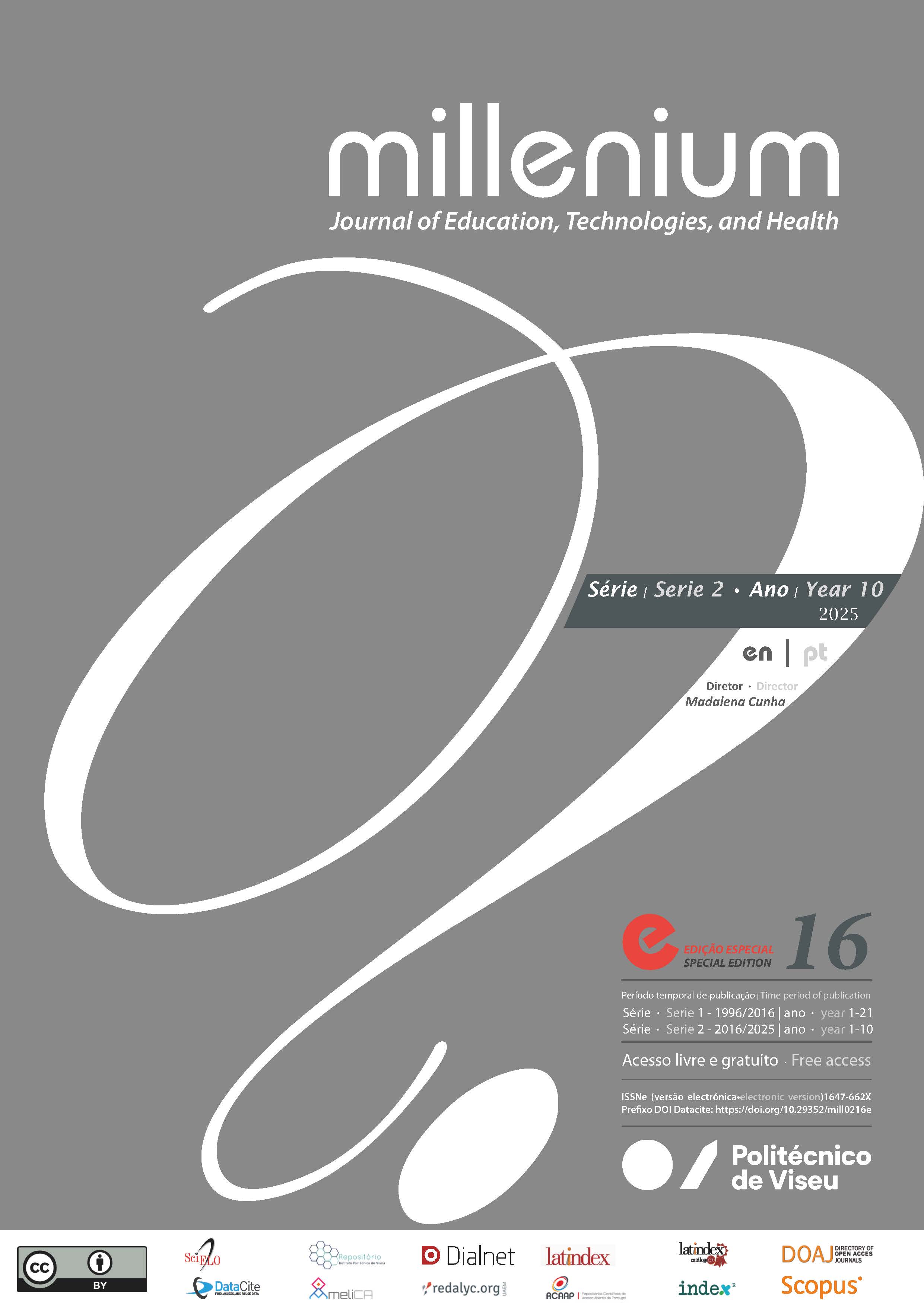The new challenges for nursing in ambulatory surgery
DOI:
https://doi.org/10.29352/mill0216e.39338Abstract
Ambulatory Surgery (AC) is defined as a “scheduled surgical intervention, performed under general, loco-regional or local anesthesia which, although usually performed in an inpatient setting, can be carried out in the patient's facilities, safely and in accordance with current legis artis, with admission and discharge in less than twenty-four hours” (Ministerial Order no. 132/2009 of January 30, article 3, point 1, p. 660). This surgical modality has multiple advantages, internationally recognized, both at an economic level due to the reduction in hospital costs and lower associated morbidity and at an organizational level, allowing for a reduction in waiting times for surgeries (Pinto et al., 2020).
The innovative vision of the AC, currently highlighted as an organizational model, has a multitude of advantages for all those involved, particularly users, as it allows them to convalesce in a familiar environment, as well as promoting faster socio-professional integration (Sarmento et al., 2013).
At the beginning of the 21st century, the low operational efficiency and poor management of human and technical resources in public health organizations in Portugal were unmistakable. Health professionals were demotivated by their working conditions and careers, and users were dissatisfied with the services provided and the long waiting times for appointments, tests and surgeries (Major & Magalhães, 2014). These factors, coupled with the need to contain public spending, led to the corporatization of public hospitals in order to improve their management and performance. The adoption of business models in the management of public hospitals in Portugal allowed for the introduction of new management practices. Thus, management elements were introduced that were able to monitor and control the activity of hospitals that are Public Business Entities (EPE), focusing on a culture of management by objectives and accountability for results, improving quality and operational efficiency, promoting merit and personal development and improving communication (Campos, 2019).
Downloads
References
Afaneh, T., Abu-Moghli, F., & Ahmad, M. (2021). Nursing-sensitive indicators: A concept analysis. Nursing Management, 28(3), 28-33. https://doi.org/10.7748/NM.2021.E1982
Aiken, L., Clarke, S. P., Sloane, D. M., Sochalski, J., & Silber, J. H. (2002). Hospital nurse staffing and patient mortality, nurse burnout, and job dissatisfaction. Journal of American Medical Association, 288(16), 1987-1993. https://doi.org.10.1001/jama.288.16.1987
Campos, A.C. (2019). Administração pública e saúde: ensaios de circunstâncias. Almedina.
Decreto Lei nº 118/2023 de 20 de dezembro (2023). Aprova o regime jurídico dos centros de responsabilidade integrados em hospitais do Serviço Nacional de Saúde. Diário da República, I série, nº 244/2023, (2023/12/20) (pág. 58-73). https://diariodarepublica.pt/dr/detalhe/decreto-lei/118-2023-808125339
Decreto Lei nº 71/2019 de 27 de maio (2019). Altera o regime da carreira especial de enfermagem, bem como o regime da carreira de enfermagem nas entidades públicas empresariais e nas parcerias em saúde. Diário da República, I série, nº 101/2019, (2019/05/27) (pág. 2626-2642). https://diariodarepublica.pt/dr/detalhe/decreto-lei/71-2019-122403266
Major, M. J., & Magalhães, A. (2014). Reestruturação do serviço nacional de saúde em Portugal: balanço da empresarialização dos hospitais públicos portugueses. Revista de Administração (São Paulo), 49(3), 476-490. https://www.sciencedirect.com/science/article/pii/S0080210716303594
Ordem dos Enfermeiros (2017). Padrões de qualidade dos cuidados especilizados em enfermagem médico-cirúrgica: Na área de enfermagem à pessoa em situação crítica: Na área de enfermagem à pessoa em situação paliativa: Na área de enfermagem à pessoa em situação perioperatória: Na área de enfermagem à pessoa em situação crónica. https://www.ordemenfermeiros.pt/media/5681/ponto-2_padroes-qualidade-emc_rev.pdf
Pinto, J. R. L., Matias, A. C. R., & Sarnadas, L. L., (2020). Nurses’ assessment of utente safety culture in ambulatory surgery: Scoping revieew protocol. Revista de Enfermagem Referência, 2020(4), 1-6. https://doi.org/10.12707/RV20059
Pinto, J., Sá, L., Amaral, A., & Amado, J. (2024). Elaboração de perfil de indicadores de qualidade sensíveis às intervenções de enfermagem em cirurgia de ambulatório. Revista de Enfermagem Referência, 6(3, Supl. 1), e31223. https://doi.org/10.12707/RVI23.63.31223
Portaria nº 132/2009 de 30 de janeiro (2009). Regulamento das tabelas de preços das instituições e serviços integrados no Serviço Nacional de Saúde. Diário da República, I série, nº 21 (13/102024) (pág. 660-758).
Portaria nº 330/2017 de 31 outubro (2017). Define o modelo do regulamento interno dos serviços ou unidades funcionais das Unidades de Saúde do Serviço Nacional de Saúde (SNS), com a natureza de entidades públicas empresariais, dotadas de personalidade jurídica, autonomia administrativa, financeira e patrimonial, que se organizem em Centros de Responsabilidade Integrados (CRI). Diário da República, I série, nº 210/207 (2017/10/31) (pág. 5848-5852). https://diariodarepublica.pt/dr/detalhe/portaria/330-2017-114133885
Armento, P., Marcos, A., Fonseca, C., Marques, M., Lemos, P., & Vieira, V. (2013). Recomendações para o tratamento da dor aguda pós-operatória em cirurgia ambulatória. Revista da sociedade portuguesa de anestesiologia, 22 (2) 35-43. https://www.apca.com.pt/documentos/recomendacoes/recomendacao_DorAguda2024.pdf
Downloads
Published
How to Cite
Issue
Section
License
Copyright (c) 2024 Millenium - Journal of Education, Technologies, and Health

This work is licensed under a Creative Commons Attribution 4.0 International License.
Authors who submit proposals for this journal agree to the following terms:
a) Articles are published under the Licença Creative Commons (CC BY 4.0), in full open-access, without any cost or fees of any kind to the author or the reader;
b) The authors retain copyright and grant the journal right of first publication, allowing the free sharing of work, provided it is correctly attributed the authorship and initial publication in this journal;
c) The authors are permitted to take on additional contracts separately for non-exclusive distribution of the version of the work published in this journal (eg, post it to an institutional repository or as a book), with an acknowledgment of its initial publication in this journal;
d) Authors are permitted and encouraged to publish and distribute their work online (eg, in institutional repositories or on their website) as it can lead to productive exchanges, as well as increase the impact and citation of published work
Documents required for submission
Article template (Editable format)















